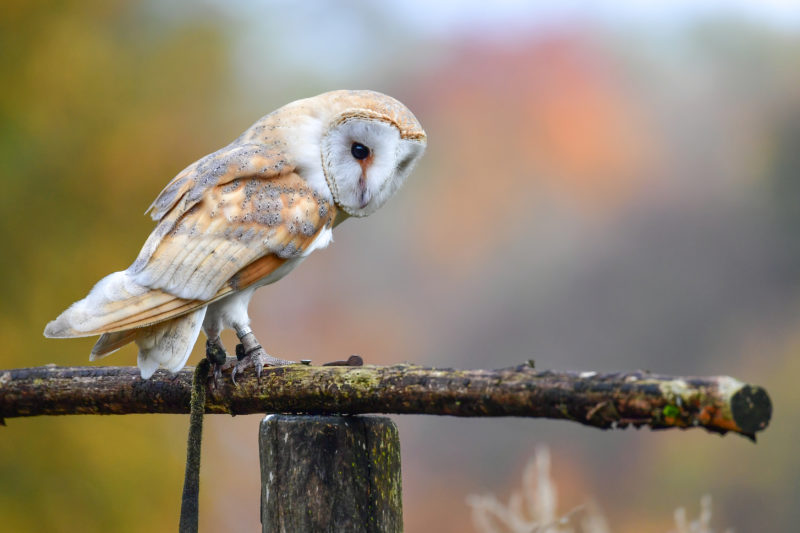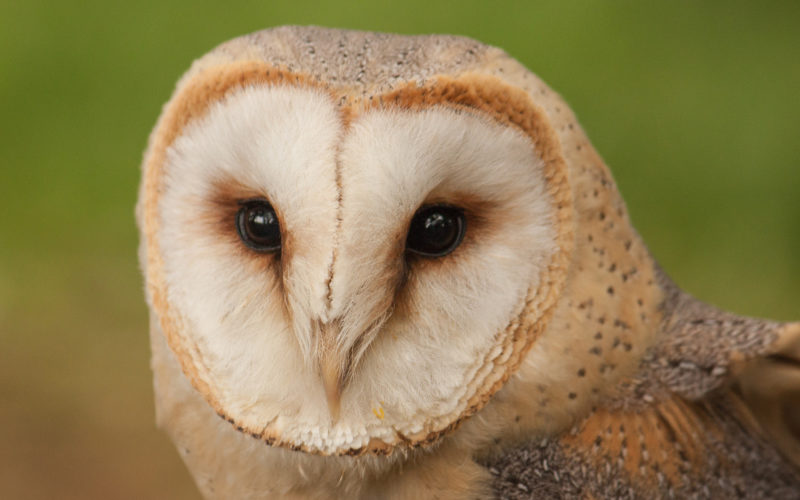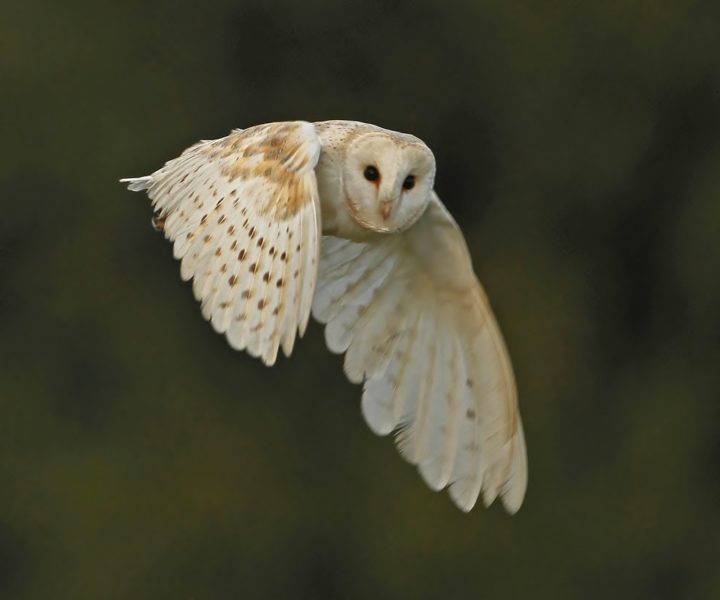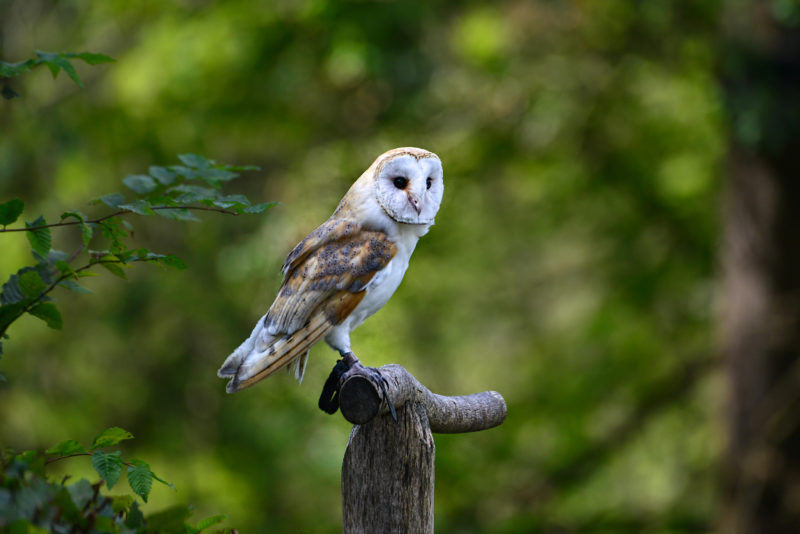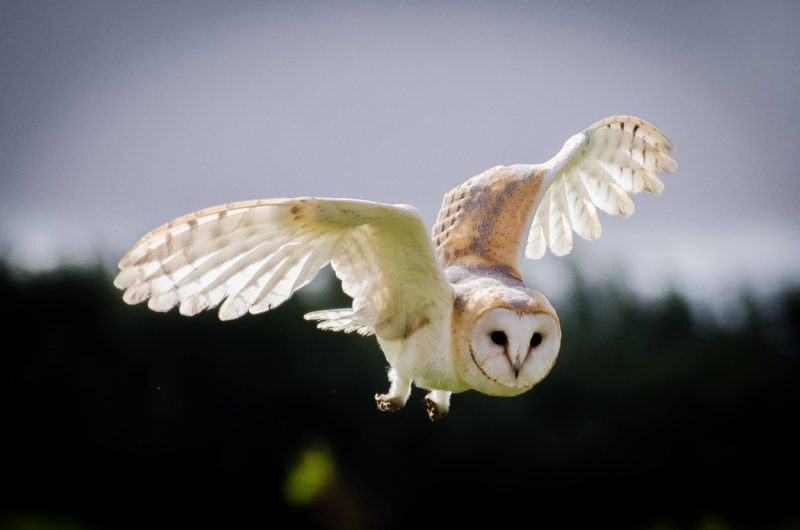A ghostly or screeching owl, a bird with the face of a monkey - this is how the common barn owl is called in common people. This unusually beautiful bird is clearly different from other species of owls. To notice this, just look at her face in an unusual shape.
Material Content:
Description of the owl and differences from other species
Barn Owl is a medium-sized owl with long plumage-covered legs.
Characteristics:
- in length, her body reaches no more than 39 cm;
- weight varies depending on the habitat - from 200 to 700 grams (the average weight of an owl is about 350 grams);
- its wingspan is 85-95 cm.;
- the upper part of the bird’s body is usually of reddish tones with numerous gray specks, spools and spots;
- the rest of the body and muzzle are white in color, also with rare dark spots.
- the owl has a round head and a flattened muzzle;
- the facial disk of the barn owl is heart-shaped - this is its main distinguishing feature from other species;
- in addition, barn owls differ from their relatives in a lighter color and a slender elongated shape.
This species has an asymmetric arrangement of ears: one ear in the forehead, the other in the nostrils. This feature allows you to hear the sounds that its victim makes, from different angles.
Habitats and lifestyle
Barn Owl is a very widespread species of owls around the world. It can be found on any continent except Antarctica. These birds have good adaptability to any climatic conditions, but they are not endowed with the ability to accumulate fat reserves, which is why they can not survive in cold conditions. Therefore, barn Owls are not found in the northern regions, preferring a milder climate. In Russia, these owls can only be found in the Kaliningrad region.
Barn Owl is a solitary bird. If, when flying around its territory, an owl notices a relative, it attacks it. Trying to intimidate the enemy, flapping its wings menacingly and flipping its beak.
In the daytime, a barn owl is hiding in its home, and when darkness falls, a bird of prey goes hunting. The barn owl moves silently, for which it received the name of a ghostly owl among people. She has well-developed eyesight and hearing, which allows her to seek out prey in complete darkness.
In search of food, a bird of this species flies around its territory, constantly changing flight altitude, or is waiting for a prey in ambush.
The bird with the face of a monkey leads a sedentary lifestyle, but can migrate to a new place with a lack of feed resources.
Bird nesting
Barn Owl often settles near people:
- in the attics of houses;
- in barns and sheds;
- on the belfries;
- in abandoned buildings.
In nature, these birds prefer open areas:
- open plains with few trees;
- swamps and ponds;
- meadows;
- ravines.
Owls of the barn owl family do not like dense forests and highlands, prefer to occupy the abandoned dwellings of other animals - hollows or burrows.
Diet
Barn Owl is a predator.
Her diet includes:
- small rodents, such as moles and shrews;
- birds, including birds of prey;
- frogs;
- the bats;
- lizards;
- insects.
Having caught the victim, the barn owl carries it to a secluded place, where it kills with sharp and tenacious claws, and then breaks it with its beak, holding it with its strong paw.
Owls of the barn owl family need at least three complete meals, for example, three rodents, per day. Zoos adhere strictly to the schedule, feeding them the right amount of mice so that the predators maintain good physical shape.
How does reproduction occur?
The breeding season of barn owl family depends on the habitat:
- in a temperate climate - the beginning of spring;
- in tropical latitudes, the breeding period of these birds is not limited by time frames.
In Europe, this species of owls hatches chicks once a year. In a hot climate, barn owls make from three clutches a year.
Owls of this species are monogamous, however, there are cases when several females per male.
At the onset of the breeding season, the male selects a nest in a secluded place, carefully hidden from prying eyes, and attracts the female's attention with the help of sharp and hoarse sounds. If the female likes the nest chosen by her partner, they mate, after which the barn owl lays from four to eight eggs.
Barn owl eggs are small and oblong, usually white. Incubation lasts about a month. All this time, the female herself hatches the future offspring, and the male carefully feeds her partner.
Only the hatched chicks are covered with a white fluff. 30-45 days after hatching, the chicks leave the nest, while they begin to fly only on the fiftieth day after their birth.
Most of these birds die in the first year of life. The rest lives for about 11 years.
Voice of the Barn Owl
The name "screeching owl" this bird received for the peculiarity of its voice. The barn owl does not know how to grin, like ordinary owls, however, it makes many different sounds. But predominant is her hoarse and rattling cry "hey", which is very similar to the hoarse cough of a sick person.
Usually she is silent and emits cries only during the mating season or during danger. Therefore, the voice of a barn owl can not be heard often.
Interesting Facts
Interesting facts can be found about every living creature, barn owl is no exception:
- Unlike babies of other species of birds fighting among themselves for each piece of food, barn owl chicks refuse food in favor of more hungry chicks. This completely atypical behavior for birds is of great interest to the barn owl species.
- In 1949, the barn owl was settled in the Seychelles, which led to a decrease in the population of kestrels living there - birds of the genus Sokol, which became the prey of an owl.
- In the 17th century, in Europe, people made special window openings in houses and barns into which barn owls could penetrate in order to destroy small pests.
- Barn Owl translated from English by its name “barn owl” is a barn owl. This is due to the love of these birds to settle next to a person.
- At the sight of a man, the bird rises, swaying and depicting funny grimaces.
- In England, the barn owl lived for twenty-two years in captivity and is a champion among its species in terms of life expectancy.
- Deforestation by man has a good effect on the distribution of the barn owl family, in contrast to other birds and animals.
Having studied all the features of a barn owl, we can conclude that this is really a special bird, which differs from its relatives not only in its amazing appearance, but also in unusual habits that are not inherent in other birds.


